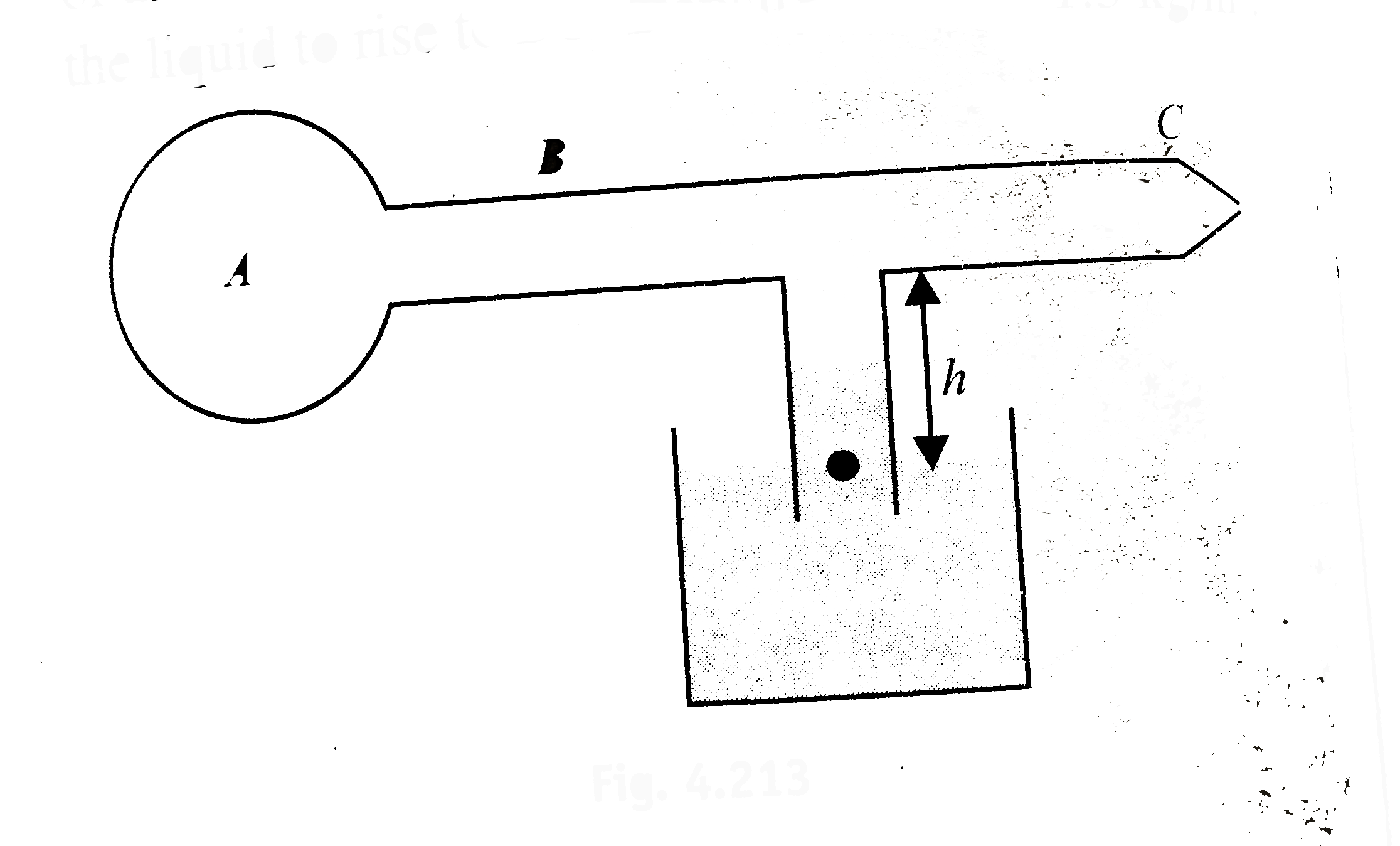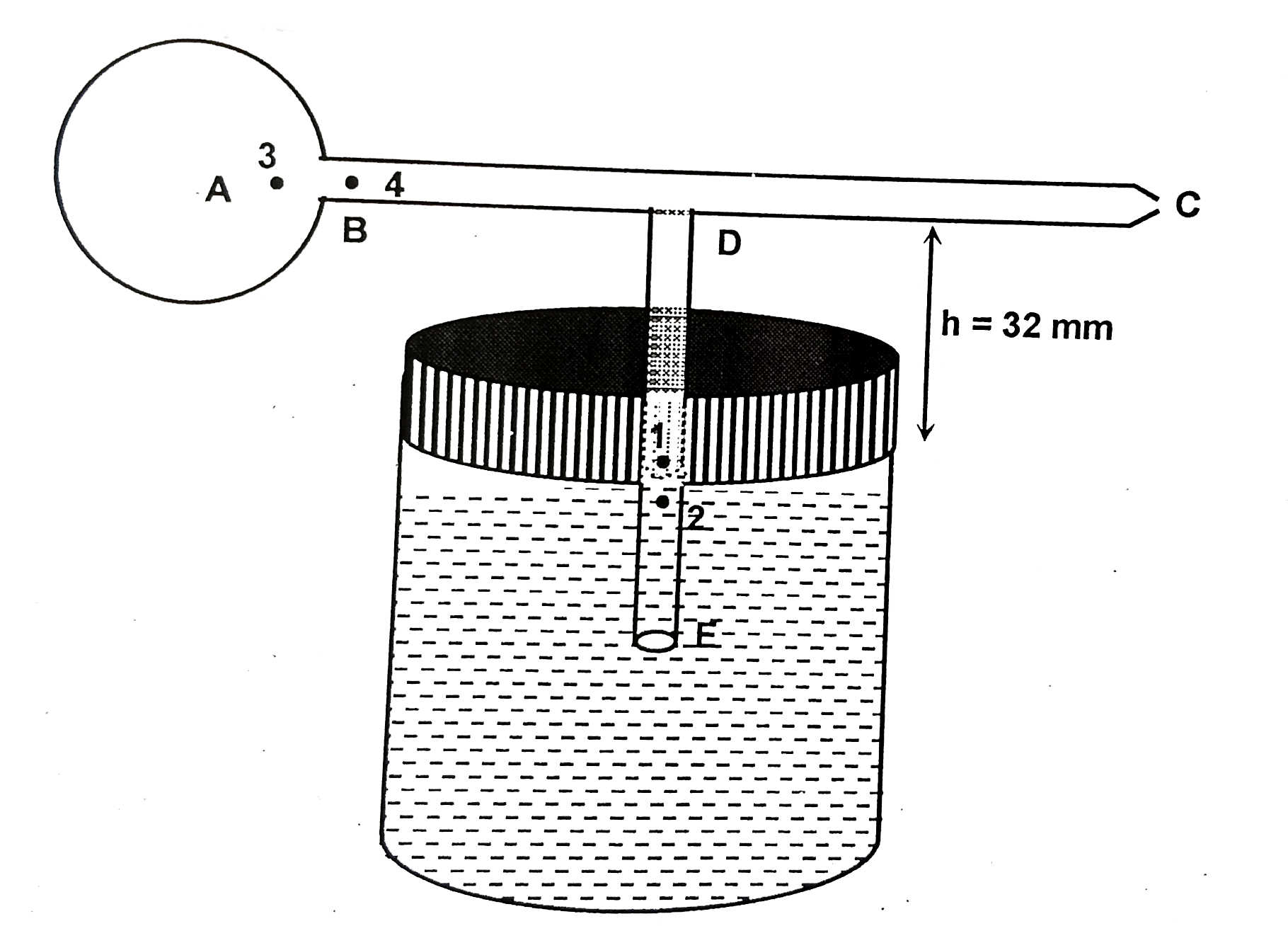Figure shows a crude type of atomizer. is compressed, air flows swiftly through tube BC causing a reduced pressure in the particles of the vertical tube. Liquid rises in the tube, enters BC and is sprayed out. if the pressure in the bulb is Pa+P, where P is the gauge pressure and Pa is the atmospheric pressure, v is the speed of air in BC, find how large would v need to be to cause the liquid to rise to BC. Density of air =1.3kg/m3.

√2(P+ρgh)ρa
Phρg√ρa
P√ρgh√ρa
Pρgh√ρa
The correct Answer is:A
Using Bernoulli’s theorem
P0+P+0+0=P1+12ρav2+0
P1=P0−ρgh (if liquid rises to BC )
P0+P=P0−ρgh+12ρav2
√2(P+ρgh)ρa=v

Similar Questions
The pressure of confined air is p. If the atmospheric pressure is P, then :-

View SolutionThe figure shows a crude type of perfume atomizer. When bulb at A is compressed, air flows swifty through the tiny BC with uniform speed v, there by causing a reduced pressure at the position of verticall tube DE. The liquid of density 500kg/m3, then rises in the tube, enters tube BC and sprayed out. When bulb is in natural position the air in the bulb and tube are at atmospheric pressure P50=15N/m2. When bulb A is compressed, it creates an exces pressure Δp=0.001P0 inside the bulb A. Density of air is 1.3kg/m3. If the magnitude of minimum value of speed v required to cause the liquid to rise to tube BC is 5km/s. Find the value of k. (g=10m/s2)

View Solution
Knowledge Check
Figure shows a crude type of atomizer. is compressed, air flows swiftly through tube BC causing a reduced pressure in the particles of the vertical to Liquid rises in the tube, enters BC and is sprayed out. if the pressure in the bulb is Pa+P, where P is the gauge pressure and Pa is the atmospheric pressure, v is the speed of air in BC, find how large would v need to be to cause the liquid to rise to BC. Density of air =1.3kg/m3.
 AP+ρgh√0.65BPhρg√0.650CP√hρg0.65DPhρg√0.65
AP+ρgh√0.65BPhρg√0.650CP√hρg0.65DPhρg√0.65How does the speed v of sound in air depend on the atmospheric pressure P?
Av∝P−1Bv∝P−2Cv∝P1/2Dv∝P0How does the speed V of sound in air depend on atmospheric pressure P ?
AV∝P−1BV∝P2CV∝P0DV∝P1/2
Compare the pressure at the point P in the three tubes shown in the figure .

View SolutionIn the figure shown the velocity and pressure of the liquid at the cross section (2) are given by (If P0 is the atmospheric pressure).

View SolutionAssertion : In the given figure shown, p1=p2.

Reason : Pressure at 1 is less than the atmospheric pressure.
View SolutionWhen water flows through a tube of radius r placed horizontally, a pressure difference p develops across the ends of the tube. If the radius fo the tube is doubled and the rate fo flow halved, the pressure differnece will be
View SolutionSuppose the pressure at the surface of mercury in as barometer tube is P1 and the pressure at the surface of mercury in the cup is P2.
View Solution
